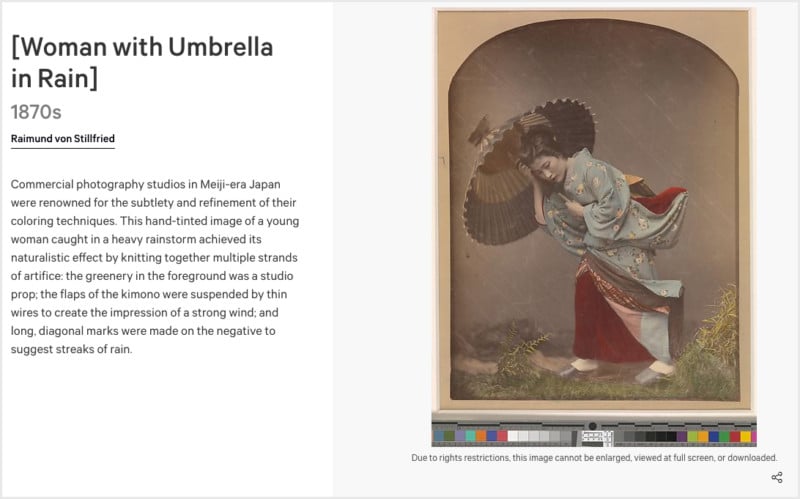How Hand-Painted Photographs Helped Introduce Japan to the World
When you see the term “colorized photo” you probably imagine skilled retouchers working in Photoshop, or perhaps a machine learning algorithm that does that same work automatically. But the original colorized photos were hand-painted prints made from glass plate negatives. And, as Vox explains, the best of these images came out of Japan.
As the video explains, the practice was popularized by Italian-English photographer Felice Beato, who hired fine artists from the woodblock print industry to create “expert quality” hand-colorings of photographic prints. What set these prints apart was both the highly skilled nature of the artists themselves, and the fact that they chose watercolor as their medium.

The popularity of this hand-coloring, though introduced by foreigners, eventually gave rise to a thriving industry of local photographers who specialized in this kind of work. And the photo albums that this industry produced and sold to tourists had a real and lasting impact on how the rest of the world perceived Japan and Japanese culture for decades to come.
Whether or not that perception was accurate is another question entirely. Much of the work they produced was purposely staged to look like iconic Japanese paintings and woodblock prints instead of representing the modern day. These prints, so undeniably beautiful on the surface, in turn helped to entrench certain stereotypes and tropes.
To learn more about the art of hand-colored photographs and how they shaped the western perception of Japan and Japanese culture, check out the full video up top. It’s a fascinating little piece of photo history, and a nice break from all the automated AI-colorization we’ve been seeing lately.